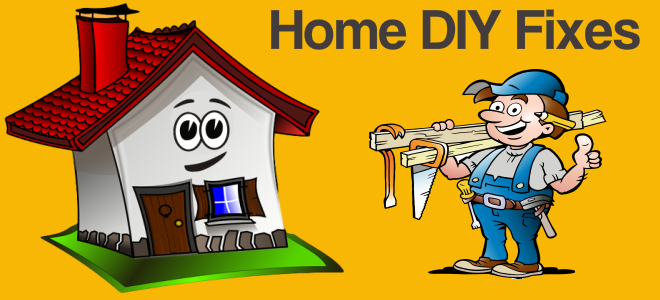Landscape Design: Easy Ways To Improve Curb Appeal
I recently purchased a new home, and improving the landscape is high on my to-do list. Landscape design, however, isn’t always straightforward, and achieving a great look requires a little nuance. The stakes are also high. If you get it wrong, you might end up with dead plants and an ugly yard for all your hard work.
Still, DIYers can save roughly 40 to 60 percent of the cost of a professional landscaper and dramatically boost their house’s curb appeal. So, to get it right, I spoke with John Moe, who has 35 years of landscaping experience and serves on the certification committee at the Minnesota Nursery and Landscape Association. He shared these quick tips.
Devise a Master Plan
Many people tackle landscaping headfirst without considering the grand picture. Eventually, they end up with a mishmash of plants that don’t look right with the house, or with one another.
Start with the end goal in mind for the best look. If you don’t feel up to the design task, get help. A landscape architect will typically charge $600 to $3,500 to visit your home and create a landscape plan; costs vary by the size of your property and the work to be done. Many garden centers offer free design services if you purchase the materials from them.
Leave a Path To the Backyard
If there’s an addition or new patio in your future, leave a path for machinery. You don’t want to tear out shrubs or a retaining wall later so a skid steer can reach the backyard.
Test Your Soil
Good soil is the key to healthy plants. A simple test will tell you whether you need to add lime, nitrogen, phosphorus or potassium to the soil.
Dig six inches down in five to 10 areas in your yard, scoop samples and mix them in a bucket. You can purchase an at-home soil testing kit at most home centers, but for best results send your soil sample to a state-certified soil-testing lab or university extension service. To find yours, enter “university extension service” and your state in a search engine. Testing fees are usually $15 to $20, and results take one to two weeks.
Common Shrub Mistakes
Planting Too Close To the House
It’s common for homeowners to plant large shrubs and other plants too close to their house’s foundation and siding. Then the owner prunes them back and they eventually become half a plant.
For a better look, plant shrubs farther away from the house and give them room to grow. In general, take the plant’s mature width and put it at least half that distance away from the house.
Letting Them Grow Unchecked
Because shrubs are relatively low maintenance, they’re easy to neglect. Overlooked for years, they grow out of control and hide the house, crowd doorways and look ugly. Drastic trimming or removing them might be the best and easiest thing you could do for your front yard.
If You Plan To Sell, Start Planting Now
Improving your landscaping is a great way to boost the curb appeal — and selling price — of a home. But remember that most plants take time to get established and look their best. If you hope to sell in midsummer, start in early spring. Better yet, start the year before you plan to sell.
Prevent Weeds With Mass Planting
Weeds will pop up wherever light reaches the soil. To make your landscaping low maintenance, place plants tightly together so weeds can’t get started.
Mix Up Textures
Plant texture refers to the size and shape of the leaves. Don’t make the mistake of choosing all the same textures for your landscape; it’s dull and monotonous. For an appealing landscape, use plants with varying leaf shapes and sizes.
Plan for Growth
Before buying a plant, check the tag for its mature size. Keep in mind that many plants grow larger than the tag indicates. Knowing the maximum size, then allowing a little extra, helps you avoid a crowded, overgrown look later.
Plant in Random Patterns
In a formal garden you may see plants all lined up, but most residential landscapes look best with a more casual design. Planting in random or zigzag patterns provides good ground coverage with fewer plants, and these arrangements are visually interesting too.
Map Out Your Colors
Our pro recommends repeating your chosen colors in different sections of your landscape. If you use red at your walkway, for example, use red at the side of your house as well. This technique gives your design continuity and balance. Remember, foliage is color too!
Plan for All-Season Color
You want your plants to bloom throughout the growing season. When you’re developing a plan, know the bloom time for each plant, and choose coordinating colors for plants blossoming at the same time. Design your landscape to highlight different plants during each season. It’s fun to see individual plants have their day in the sunlight.
For Drama, Choose White and Yellow
Red and purple are vivid colors. But in a landscape, yellow and white flowers are the real attention grabbers. They stand out more against green foliage while others tend to disappear. So if you want an eye-catching landscape, use yellow and white flowers.
Don’t Put Poly Under Wood Mulch
Putting poly under wood mulch prevents the decomposing mulch from enriching the soil. Instead, place a four-inch layer of wood mulch on the soil to block sunlight from reaching it. Like poly, this prevents weeds. But unlike poly it will naturally decompose, providing nutrients to your plants. You’ll have to add mulch as needed.
https://www.familyhandyman.com/article/easy-landscape-design/
